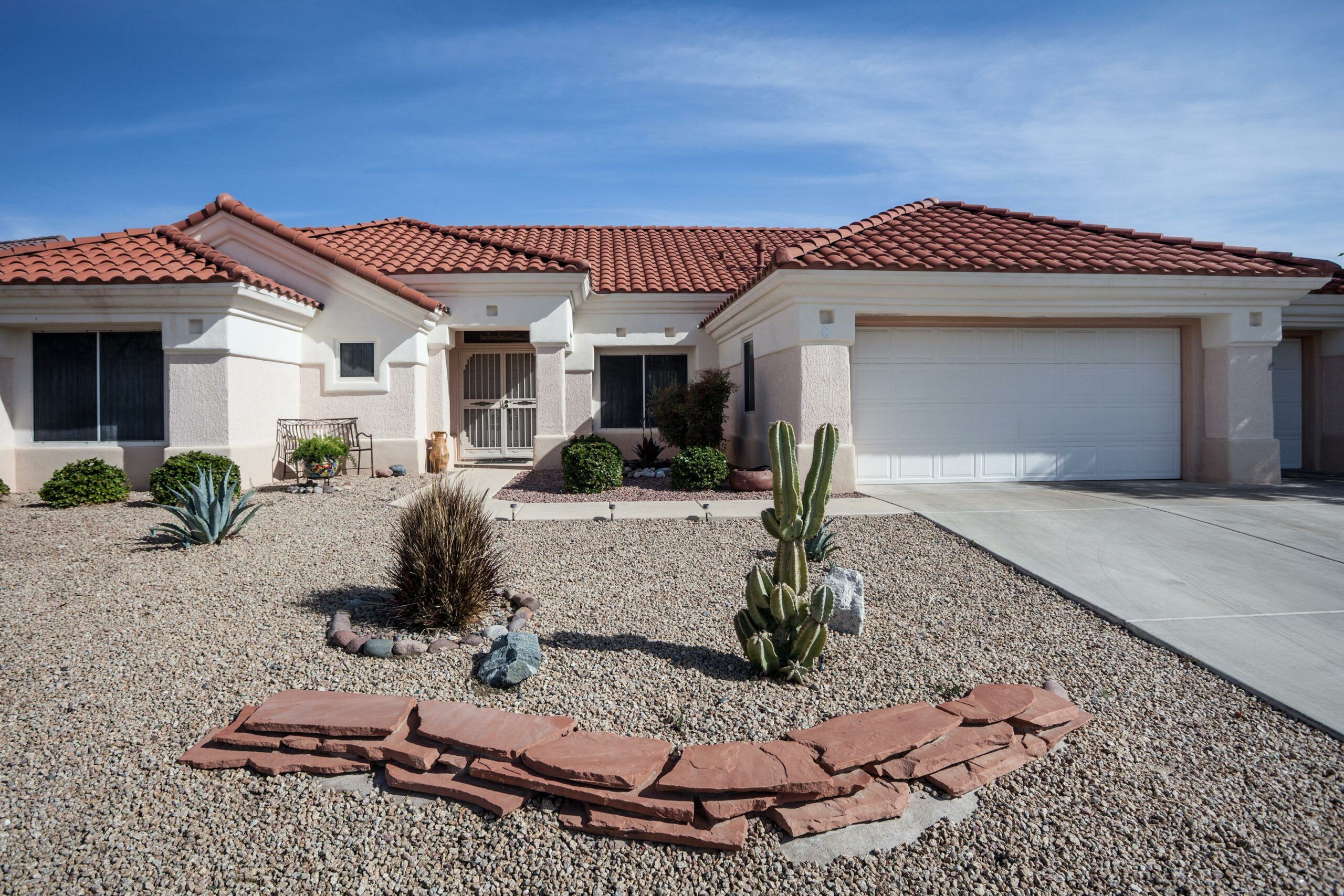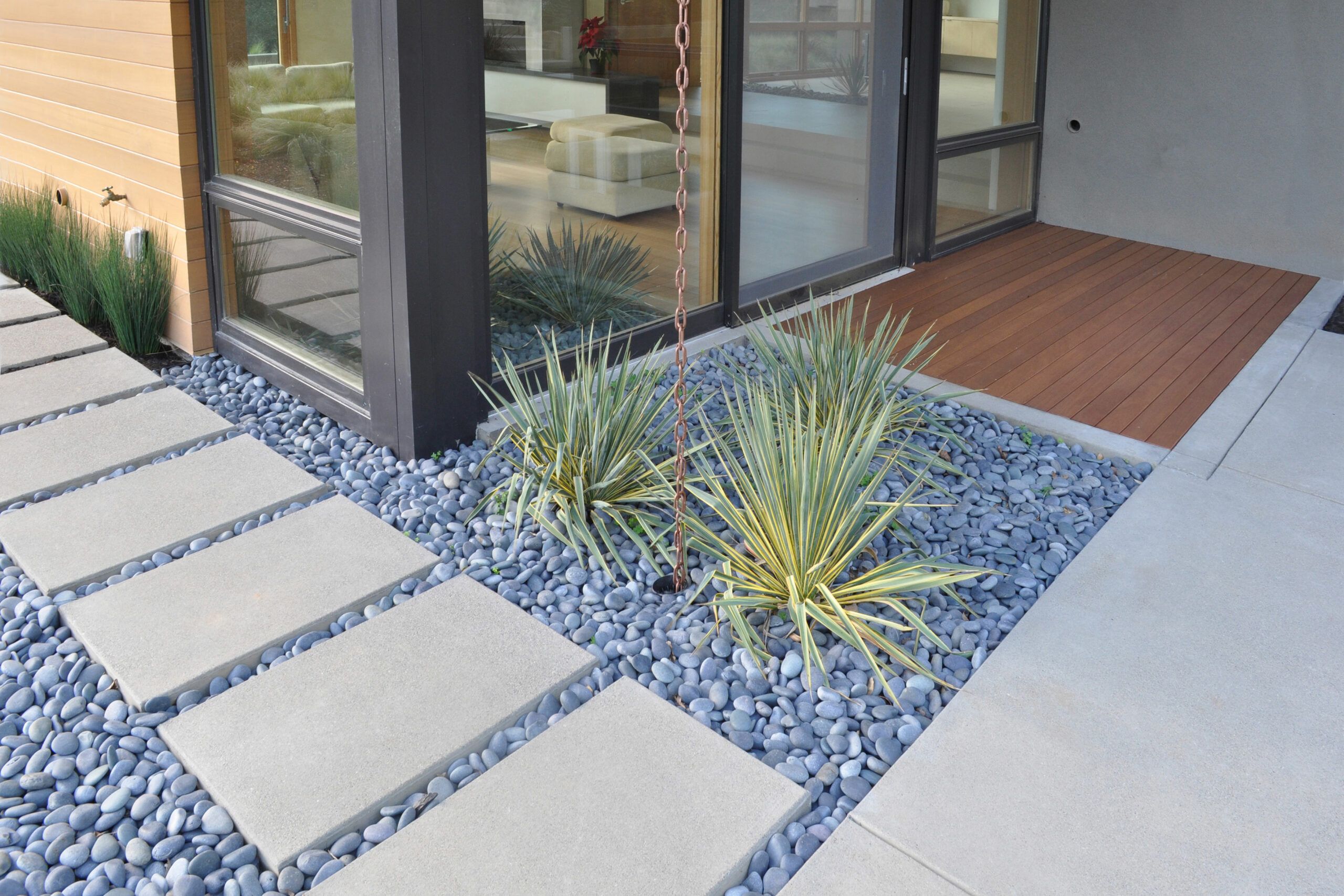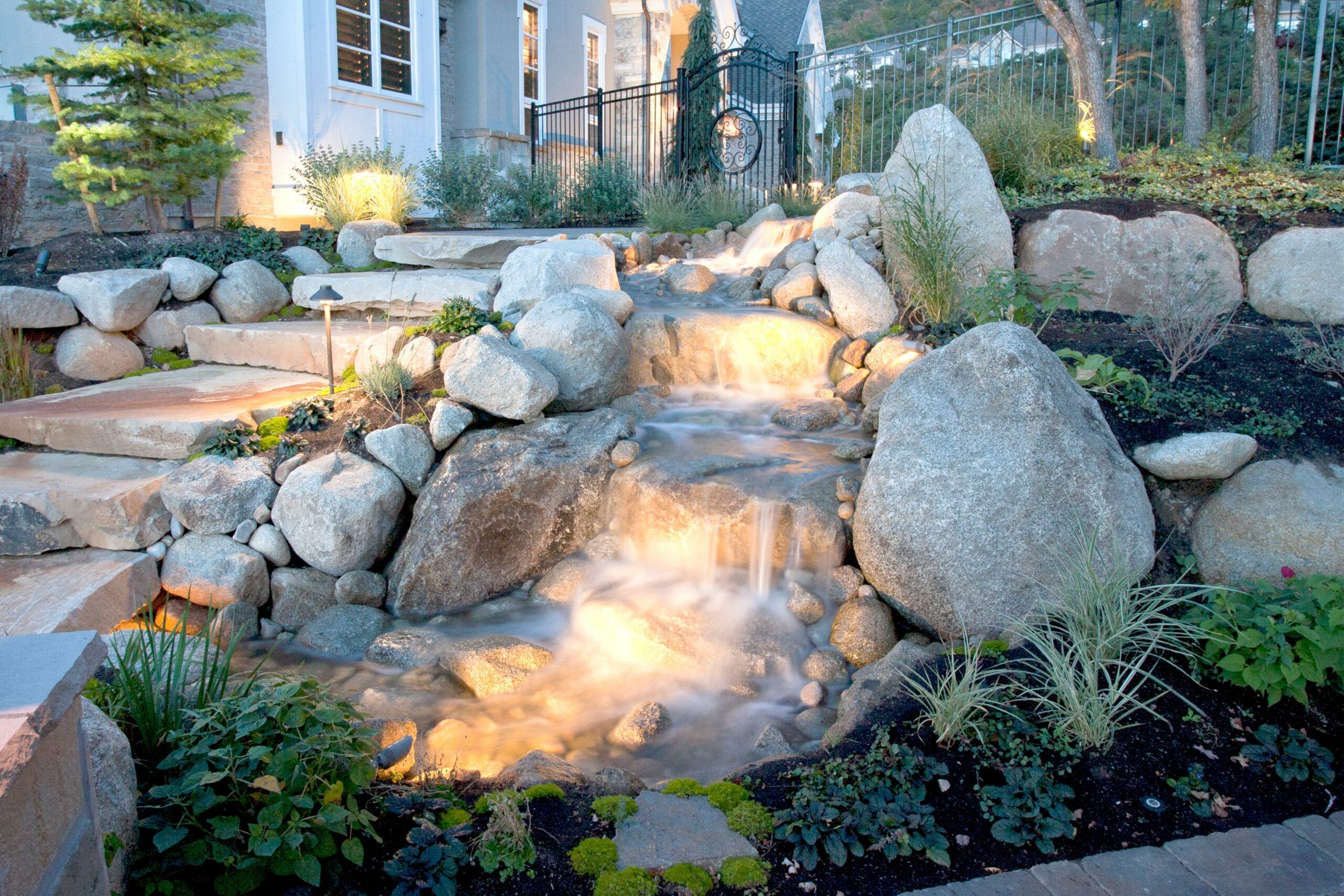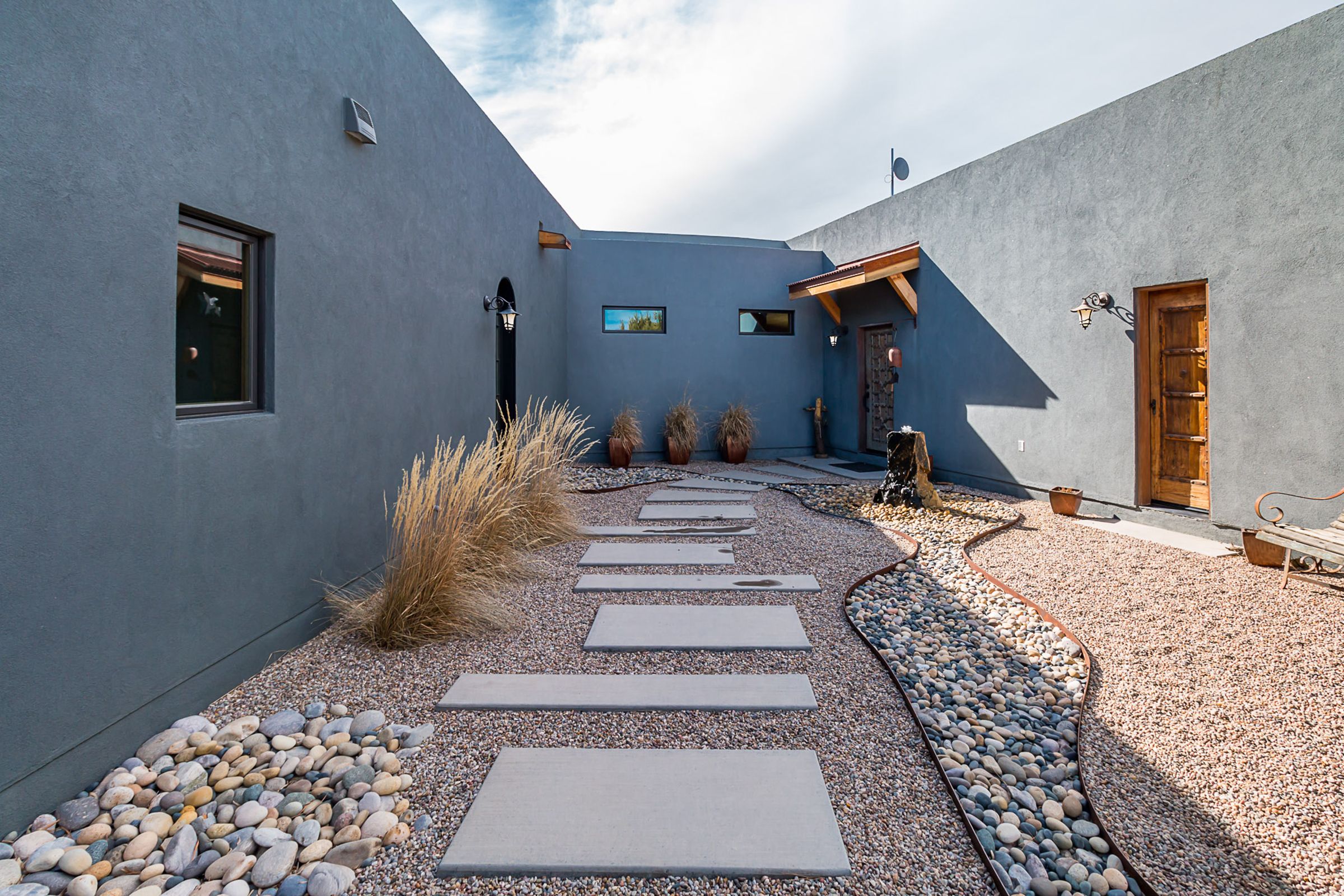Rock landscaping is becoming increasingly popular thanks to its undeniable eco-friendly benefits. Unlike grass or other water-guzzling plants, rocks require little to no maintenance, don’t need water, and are instantly satisfying—no need to wait for them to mature like a shrub or tree.
They’re also visually dynamic, adding unique shapes and textures to gardens large and small. Check out the other advantages of installing a rock garden, along with our favorite back and front yard rock landscaping ideas, below.
The Benefits of Rock Landscaping
Rock landscaping offers numerous advantages for homeowners, particularly in regions without much rainfall. These low-maintenance gardens allow you to achieve your desired outdoor aesthetic while conserving water and reducing costs. Here are some key benefits of incorporating rocks into your landscape design:
- Visual interest: Rocks add texture, color, and dimension to your outdoor space, creating a visually dynamic environment. They complement various plants and decor elements beautifully.
- Water conservation: Rocks don’t require watering, making them ideal for drought-prone areas. This can significantly cut down on water bills and help retain precious resources.
- Fire safety: According to the U.S. Department of Agriculture Forest Service, rocks are considered “fire-wise landscaping” and can help protect your home from wildfires by acting as a barrier.
- Longevity: Rocks can substitute for traditional mulch, maintaining soil moisture and reducing weed growth without the need for frequent replenishment.
- Erosion control: Strategically placed rocks can prevent soil erosion and create natural borders between different landscaping elements. This makes slopes and uneven terrain more stable.
Planning a Rock Garden

When planning your rock garden, consider your desired aesthetic and the functional aspects of your outdoor space. Think about where you want to place the rocks and how they will interact with existing landscaping elements. Here are some factors to consider:
- Rock types: Choose rocks that complement your home’s architecture and overall landscape design. Options include river rocks, boulders, gravel, and decorative stones. Each type offers unique visual and functional benefits.
- Climate considerations: In hot, sunny climates, be mindful of heat absorption when selecting dark-colored rocks. Light-colored stones may be better for reflecting heat.
- Scale and size: Incorporate rocks of varying sizes to create visual interest and prevent a uniform appearance. Mix large boulders with small pebbles for a balanced look.
- Plant integration: Plan how you’ll incorporate plants among the rocks to soften the landscape and add color. Succulents, alpine plants, and ornamental grasses work well in rock gardens.
- Drainage: Ensure proper drainage to prevent water accumulation around your home’s foundation. This is crucial for preventing issues such as water damage and mold growth.
Remember to check local regulations and homeowners’ association rules before starting your rock landscaping project. Compliance ensures that your efforts align with community standards and avoid potential penalties.
How to Use Rocks in Your Landscape Design
Rock landscaping offers numerous possibilities for enhancing your outdoor space. From paths to water features, rocks can serve both functional and aesthetic purposes. Here are some practical ways to incorporate rocks into your landscape design.
1. Create a Rock Path
A rock path is one of the most common rock landscaping ideas. Whether you choose stepping stones or a deconstructed gravel path, the sky’s the limit when it comes to design choices. To get started, take inspiration from your home—is it more modern or traditional in style? From there, you can narrow down the types and colors of rocks and stones to use.
Design your rock path where you want foot traffic to flow—this will discourage people from treading elsewhere and ruining grass or other plantings. Check out our directions on how to lay a stepping-stone path.
2. Build Rock Walls
Whether they’re purely decorative, functioning as a retaining wall, acting as a fence or border, or are used as a transition on a hillside, rock walls add aesthetic value to your home—and may even increase your property value.
Regardless of its function, building a rock wall is not easy, even for experienced DIYers. It’s strenuous work that will take days, if not weeks, to complete. If you are determined to do it yourself, check out our handy guides to building a freestanding stone wall or a retaining wall with concrete blocks.
3. Design with River Rocks

River rock landscaping is unique because the smooth, river-worn surfaces of the stones add a peaceful, zen-like quality to your outdoor design. These versatile rocks can be used as borders or under stepping-stone paths, and they also make great-looking dry creek beds that meander through a property.
Even better? Add river rocks under your downspouts to help drain water away from your property, creating a naturally attractive design with the added benefit of being functional.
4. Create Contrast with White Rock Gardens
White rock landscaping can dramatically emphasize garden borders and create a striking contrast in your outdoor design. These light-colored stones are excellent for highlighting plants and garden features that might otherwise go unnoticed. You can use white rocks to:
- Define planting areas
- Create modern, minimalist designs
- Brighten shaded areas of your garden
- Complement colorful flowers and foliage
When using white rocks, be mindful of potential glare in sunny areas and consider incorporating plants or darker elements to balance the overall design. This approach ensures a harmonious and visually appealing garden.
5. Install Rocks in Water Features

Incorporating rocks into water features can elevate your outdoor design and create a more natural, harmonious environment. Rocks and water complement each other beautifully in various applications:
- Water fountains
- Ponds and waterfalls
- Decorative creeks
- Drainage ditches
When designing water features with rocks, consider the size and shape of the stones, as well as their placement, to create a visually appealing and functional element in your landscape. Ensure proper installation to prevent water leakage and maintain the feature’s longevity. Regular maintenance will also help keep the water clear and the rocks free of algae.
Our Conclusion
Rock landscaping offers a versatile, low-maintenance, and visually appealing solution for homeowners looking to enhance their outdoor spaces. From creating paths and walls to designing water features and gardens, rocks can be incorporated in countless ways to suit various styles and preferences.
By carefully planning your rock garden and considering factors such as climate, scale, and functionality, you can create a stunning and sustainable landscape that will stand the test of time.

